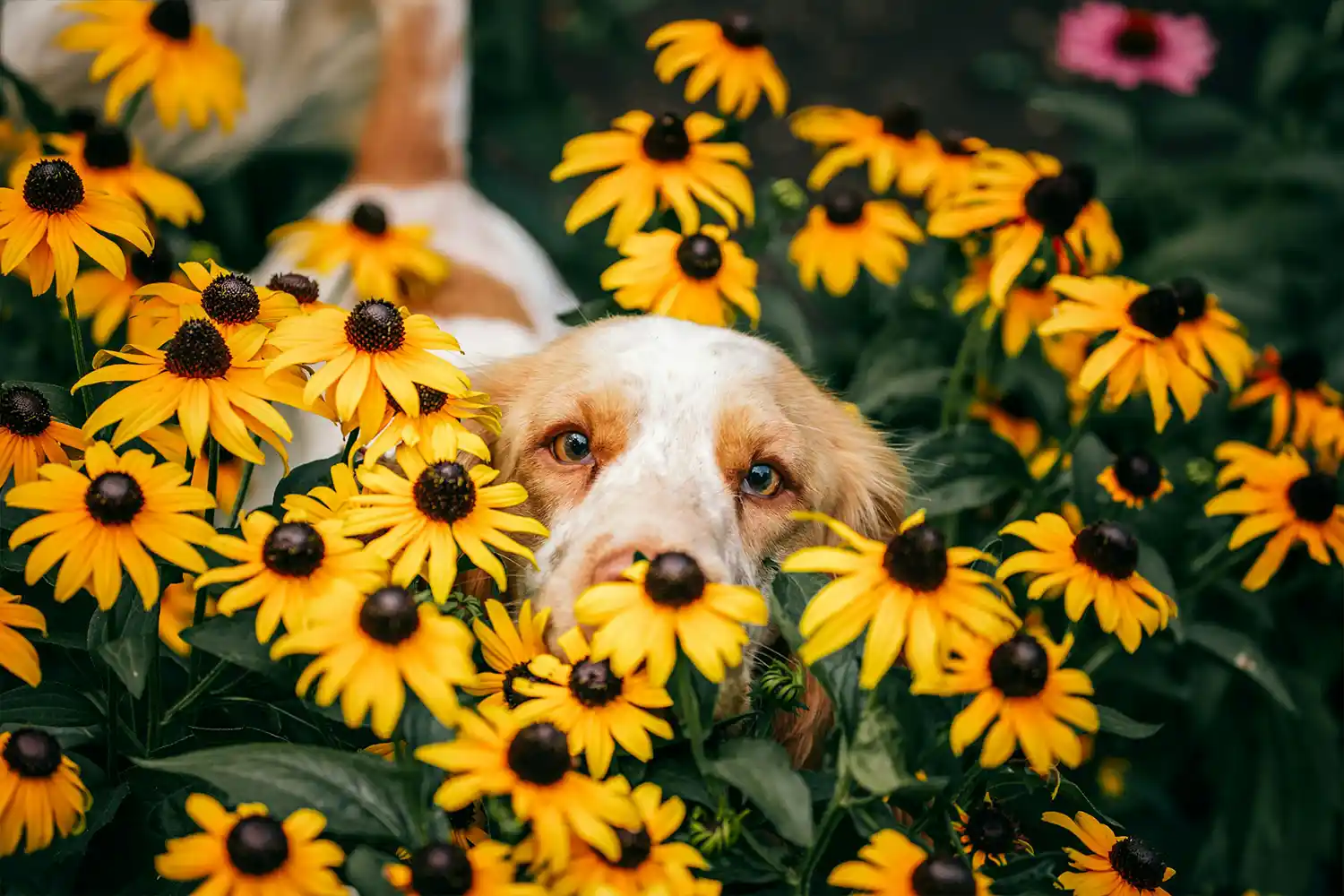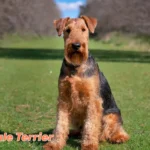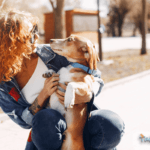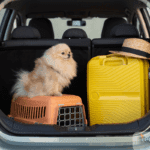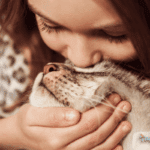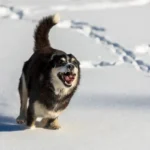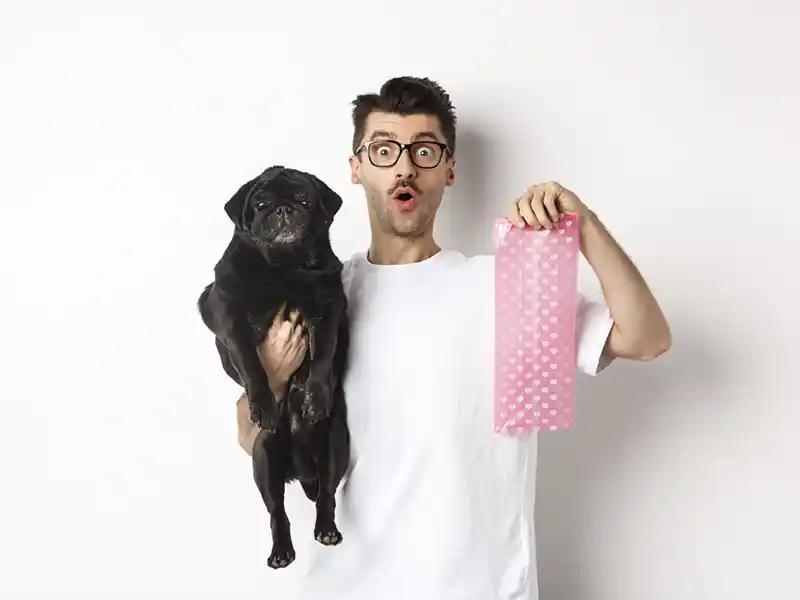What Do I Need To Know
A Veterinarian’s Guide to Safe and Enriching Garden Spaces
What is a dog-safe garden? A dog-safe garden is an outdoor space specifically designed to eliminate toxic plants, secure boundaries, and create enriching areas where dogs can safely play and explore without risk to their health and wellbeing.
As the ASPCA Animal Poison Control Center reports, they handle over 10,000 cases of plant poisoning in pets annually. This comprehensive guide combines expert veterinary advice with practical dog-friendly backyard ideas to help you create the perfect outdoor space for your pet.
When designing a dog-safe garden, focus first on eliminating toxic plants and creating clear boundaries. Most emergency cases I see come from dogs having access to harmful plants or unsecured spaces.” 🩺 Expert Veterinary Tip from Dr. Esther Knoetze, BVSc.
Why Your Garden’s Safety Matters
According to the American Pet Products Association’s 2023-2024 National Pet Owners Survey, over 65% of U.S. households with dogs use their yard as a primary exercise space. Creating a safe outdoor environment isn’t just about aesthetics – it’s about protecting your furry family member while providing enriching experiences.
Like creating harmony between pets in your home, designing a safe garden requires careful planning. Check out our guide on How to Help Your Dog and Cat Coexist.
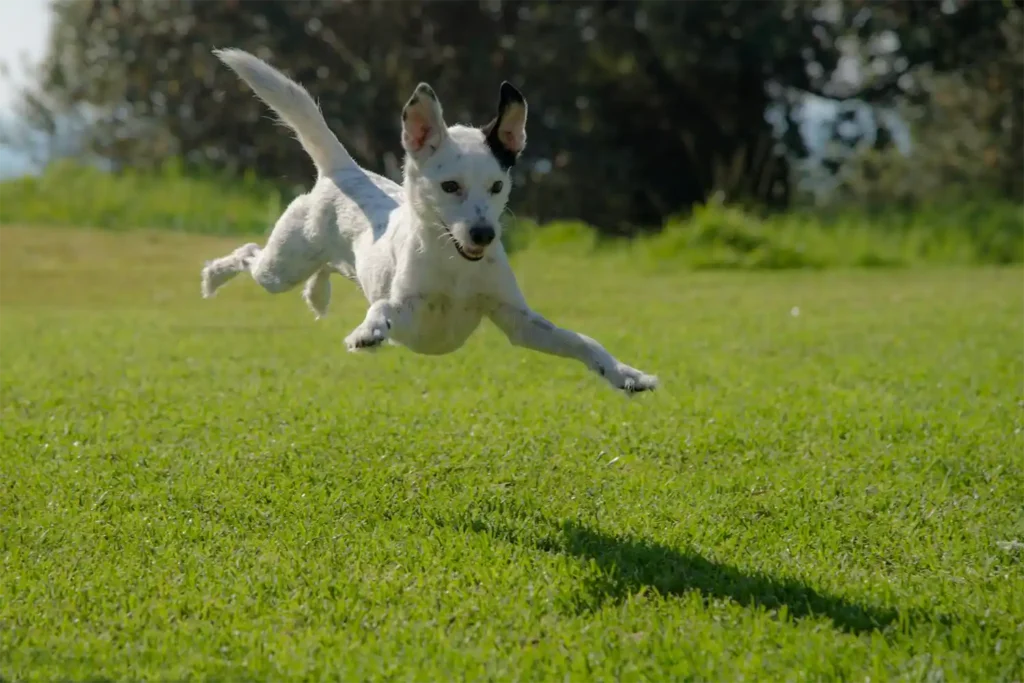
1. How to Create Secure Dog-Friendly Boundaries
What makes a dog-proof fence? A dog-proof fence combines appropriate height, secure anchoring, and gap-free construction to prevent escapes while ensuring your pet’s safety and comfort.
Dog-Proof Fencing Requirements
The American Kennel Club (AKC) specifies these essential guidelines:
- Fence height by breed size:
- Large breeds: minimum 6 feet
- Medium breeds: 5 feet minimum
- Small breeds: 4 feet minimum
- Underground security barrier: 12-inch minimum depth
- Gap spacing: maximum 4 inches between panels
- Gate latches: double-locking mechanisms recommended
When choosing fencing, consider your dog’s behavior patterns. Many escape incidents I treat occur because the fencing didn’t account for the dog’s jumping or digging abilities.” 🩺 Expert Veterinary Tip from Dr. Esther Knoetze, BVSc.
Additional Security Measures
- Install dig-proof barriers along fence lines
- Add coyote rollers for determined jumpers
- Use secure gate springs for automatic closure
- Regular fence inspection schedule
🐾 Tailwaggors Tip:
Create a double-gate system at entrance points to prevent escape during garden maintenance. This “airlock” style entry provides an extra layer of security for especially clever escape artists!
For additional safety tips during extreme weather, read our guide on Cold Weather Safety Tips for Your Pets.
2. Dog-Friendly Backyard Ideas: Creating Safe Activity Zones
What should a dog-friendly yard include? According to the American Veterinary Medical Association (AVMA), a properly designed dog-friendly yard needs distinct zones for different activities, incorporating both exercise and rest areas.
Essential Activity Zones
Play Zone Design:
- Impact-absorbing ground cover (APDT-approved materials)
- Open running space (minimum 10×20 feet recommended)
- Interactive features like agility equipment
- Non-toxic toy storage solutions
Rest Area Requirements:
- Multiple shaded spots (30-50% shade coverage)
- Cool, comfortable surfaces
- Easy access to fresh water
- Weather protection
Temperature regulation is crucial in outdoor spaces. The ‘5-second rule’ applies – if you can’t hold your palm on the ground for 5 seconds, it’s too hot for your dog’s paws. Always provide multiple cooling stations during warm weather.” 🩺 Expert Veterinary Tip from Dr. Esther Knoetze, BVSc.
Path Planning:
- Clear, designated walking routes
- Non-toxic, paw-safe materials
- Gentle slopes for easy navigation
- Strategic placement away from garden beds
🐾 Tailwaggors Tip:
Create a dedicated “sniffing garden” along pathways using pet-safe herbs like chamomile and mint. This provides enriching sensory experiences during walks!
3. Safe Plants for Dogs: Creating a Pet-Friendly Garden Landscape
What plants are completely safe for dogs? According to the ASPCA Poison Control Center’s 2024 database, certain plants are verified as non-toxic and safe for dog gardens.
Dog-Safe Garden Plants Directory
Pet-Friendly Flowers:
- Roses (thornless varieties)
- Snapdragons
- Petunias
- Sunflowers
- Zinnias
Safe Garden Shrubs:
- Camellias
- Butterfly Bush
- Rose of Sharon
- Hibiscus
- African Violet
While these plants are safe, always supervise new dogs in the garden. Some pets may have individual sensitivities even to safe plants. Monitor for any unusual behavior or digestive changes.” 🩺 Expert Veterinary Tip from Dr. Esther Knoetze, BVSc.
Safe Gardening Strategies
Plant Placement:
- Border pet paths with sturdy, safe plants
- Create natural barriers with dense, dog-safe shrubs
- Elevate delicate plants in raised beds
- Use container gardens for herb varieties
🐾 Tailwaggors Tip:
Create a dedicated “dog salad bar” with safe, edible plants like wheatgrass or dandelions. Many dogs enjoy gentle grazing, and this gives them a safe space to satisfy that urge!
Learn more about plant toxicity in our comprehensive Toxic Plants for Dogs Guide.
4. Dog-Safe Ground Cover Options and Materials
What is the best ground cover for dog areas? The safest ground covers combine durability with pet-safe materials while providing comfortable surfaces for paw health.
Veterinarian-Approved Ground Covers
Safe Mulch Options:
- Cedar mulch (natural flea deterrent)
- Pine bark (large pieces to prevent ingestion)
- River rocks (smooth, too large to swallow)
- Rubber mulch (certified pet-safe varieties)
Prohibited Materials:
- Cocoa mulch (contains theobromine)
- Sharp-edged rocks
- Treated wood chips
- Chemical-treated materials
Choose ground covers based on your dog’s habits. For diggers, consider rubber mulch or rock gardens. For seniors, opt for softer surfaces that are gentle on aging joints.”🩺 Expert Veterinary Tip from Dr. Esther Knoetze, BVSc.
Surface Requirements by Zone
High-Traffic Areas:
- Artificial turf with proper drainage
- Decomposed granite (compacted)
- Professional-grade rubber chips
- Natural grass alternatives
Rest Areas:
- Clover (resistant to pet wear)
- Buffalo grass
- Pet-safe artificial turf
- Cork mulch in shaded areas
🐾 Tailwaggors Tip:
Test ground cover temperature during peak heat hours. If it’s uncomfortable for your bare feet, it’s too hot for your pup’s paws. Consider installing shade sails or pergolas over high-traffic areas.
5. Dangerous Plants: What to Remove from Your Dog’s Garden
What garden plants are most toxic to dogs? The Pet Poison Helpline and ASPCA identify these plants as potentially lethal to dogs, with specific mortality rates and risk levels.
High-Risk Garden Plants
Severe Toxicity (Emergency Cases):
- Sago Palm (50-75% mortality rate if ingested)
- Japanese Yew (cardiac failure risk)
- Oleander (severe heart effects)
- Autumn Crocus (acute organ failure)
- Lily of the Valley (cardiac glycosides)
Moderate Toxicity Level:
- Azaleas/Rhododendrons
- Tulip/Narcissus bulbs
- Chrysanthemums
- Hydrangea
- Fox Glove
Time is critical in plant poisoning cases. Don’t wait for symptoms to appear – contact your vet immediately if you suspect ingestion. Take photos and samples of the plant for quick identification.” 🩺 Expert Veterinary Tip from Dr. Esther Knoetze, BVSc.
Learn more about plant toxicity in our comprehensive Toxic Plants for Dogs Guide.
Emergency Response Plan
Immediate Actions:
- Remove plant material from mouth
- Document ingestion time
- Photograph the plant
- Contact emergency services:
- Pet Poison Helpline: 855-764-7661
- ASPCA Animal Poison Control: 888-426-4435
Keep our First Aid for Pets Guide handy for any garden emergencies.
6. Pet-Safe Lawn Care Guidelines
How do you maintain a dog-friendly lawn? The Environmental Protection Agency (EPA) provides these specific guidelines for pet-safe lawn maintenance.
Safe Lawn Care Schedule
Treatment Waiting Periods:
- Post-mowing: 30 minutes
- Organic fertilizers: 24 hours
- Natural pest controls: 48 hours
- Irrigation: Early morning only
Safe Lawn Products:
- Organic, pet-safe fertilizers
- Natural weed control methods
- Chemical-free pest management
- Non-toxic grass supplements
Even organic products can cause gastrointestinal upset. Always keep your dog off treated areas until completely dry, and store all lawn products in secured, pet-inaccessible locations.” 🩺 Expert Veterinary Tip from Dr. Esther Knoetze, BVSc.
Maintenance Best Practices
Regular Care:
- Mow at 2.5-3 inches height
- Water deeply, less frequently
- Monitor for mushroom growth
- Remove lawn debris promptly
🐾 Tailwaggors Tip:
Create a lawn care calendar marking safe re-entry times after treatments. Share it with all family members to ensure consistent pet safety protocols.
Considering natural alternatives? Read our detailed analysis of CBD Oil: Unlocking Serenity or Not.
7. Dog-Friendly Garden Maintenance: Daily Safety Checklist
How do you maintain a pet-safe garden? UC Davis Veterinary Medicine emphasizes daily maintenance as crucial for preventing pet emergencies. Here’s your comprehensive safety checklist.
Daily Garden Safety Protocol
Morning Safety Sweep:
- Remove fallen fruit/berries
- Clear overnight debris
- Check for mushroom growth
- Inspect fence integrity
- Empty standing water
Evening Security Check:
- Secure all garden tools
- Lock chemical storage
- Check water feature safety
- Ensure gate latches are secure
- Clear pet waste
Most garden accidents happen during dawn and dusk when visibility is low. Use solar lighting along paths and inspect areas with a flashlight during evening checks.” 🩺 Expert Veterinary Tip from Dr. Esther Knoetze, BVSc.
8. Emergency Planning for Dog-Friendly Gardens
What should a pet garden emergency kit contain? The American Animal Hospital Association (AAHA) recommends these essential preparations:
Garden Emergency Kit Contents
First Aid Essentials:
- Waterproof container
- Sterile saline solution
- Clean towels
- Disposable gloves
- Plant identification guide
- Emergency contact list
Emergency Contacts:
- Primary veterinarian
- 24-hour emergency vet
- Pet Poison Helpline
- Local animal control
- Trusted pet sitter
🐾 Tailwaggors Tip:
Create a digital garden plant inventory with photos. In emergencies, this quick reference can help veterinarians identify potential toxins faster.
9. Seasonal Dog Garden Safety Guide
How do you adapt your dog-friendly garden for different seasons? The AVMA outlines specific seasonal safety protocols:
Season-Specific Safety Measures
Spring Garden Safety:
- Remove toxic spring bulbs
- Monitor for bee activity
- Clear winter debris
- Check fence stability
- Update pest control methods
Summer Protection:
- Ensure multiple water stations
- Create additional shade areas
- Monitor ground temperature
- Check for dehydrated plants
- Maintain cooling stations
Heat stroke cases spike during summer months. Create multiple cooling zones and limit outdoor activity during peak heat hours (10 am – 4 pm).” 🩺 Expert Veterinary Tip from Dr. Esther Knoetze, BVSc.
Regular health monitoring is crucial. Learn why in our article about Why Regular Checkups Are Important to Your Pet’s Health. For comprehensive winter protection, check our guide on 12 Science-Backed Ways to Keep Your Dogs and Cats Cozy This Winter.
10. Dog-Safe Garden Storage Solutions
How should you store garden tools and products with dogs present? Cornell University Veterinary Medicine outlines these critical safety protocols for pet-safe storage.
Secure Storage Guidelines
Tool Storage Requirements:
- Lockable garden shed/cabinet
- Wall-mounted tool racks
- Covered sharp edges
- Hose and cord organization
- Child-proof latches
Chemical Storage Protocol:
- Elevated, locked cabinets
- Original containers only
- Clear labeling system
- Spill containment trays
- Ventilated storage area
🐾 Tailwaggors Tip:
Create a “garden tools in use” system – never leave tools unattended, even during quick breaks. Use a bright-colored tool basket that signals to family members when equipment is in active use.
Understanding pet behavior is key. Learn more in our Complete Guide to Fostering Positive Dog Behavior.
11. Dog-Friendly Water Features
What makes a safe garden water feature for dogs? The AKC provides specific guidelines for pet-safe water elements:
Safe Water Feature Design
Dog-Safe Pond Requirements:
- Maximum depth: 2 feet
- Gently sloped edges
- Non-slip surfaces
- Filtered water system
- Regular quality testing
Safety Considerations:
- Visible water boundaries
- Secured pump equipment
- Algae prevention
- Easy exit points
- Regular maintenance schedule
Watch for blue-green algae in water features, especially during warm months. This toxic algae can be lethal to dogs within hours of exposure.” 🩺 Expert Veterinary Tip from Dr. Esther Knoetze, BVSc.
12. Natural Pest Control for Dog Gardens
What are the safest pest control methods for dog gardens? The ASPCA endorses these pet-safe pest management solutions:
Dog-Safe Pest Management
Natural Deterrents:
- Nematodes for grub control
- Diatomaceous earth (food grade)
- Cedar oil sprays
- Companion planting
- Beneficial insects
Prohibited Methods:
- Chemical pesticides
- Rodenticides
- Slug pellets
- Ant poisons
- Synthetic repellents
🐾 Tailwaggors Tip:
Create a pest-resistant garden by planning companion plantings. Marigolds naturally repel many insects, while being completely safe for dogs!
New to pet parenting? Review our guide on 10 Things to Consider Before Bringing a New Pet Home.
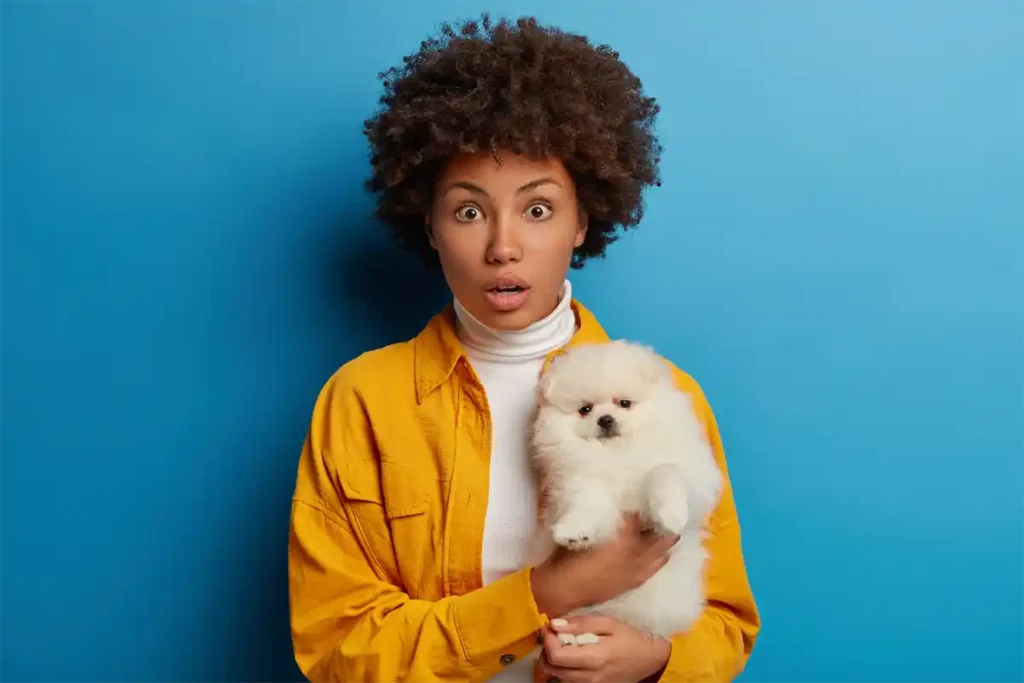
Frequently Asked Questions About Dog-Safe Gardening
What makes a garden truly dog-safe?
+According to the ASPCA, a dog-safe garden must incorporate three essential elements:
- Non-toxic plants and materials
- Secure physical boundaries
- Designated activity zones
The space should allow natural behaviors while eliminating common hazards that lead to emergency vet visits.
Which garden plants are most dangerous to dogs?
+According to the ASPCA Animal Poison Control Center’s 2023-2024 data, these plants are most lethal:
- Sago Palm (50-75% mortality rate if ingested)
- Japanese Yew (Severe cardiac effects within hours)
- Oleander (Highly toxic to heart function)
- Lilies (Severe kidney damage)
- Autumn Crocus (Acute organ failure potential)
🩺 Veterinary Insight:
“The deadliest plants often have the most innocent appearances. Never add new plants without confirming their safety through the ASPCA’s toxic plant database.” – Dr. Esther Knoetze, BVSc
How do I create effective dog-proof fencing?
+The AKC specifies these critical fencing requirements:
- Height: 6 feet for large breeds, 5 feet medium, 4 feet small
- Underground barrier: 12 inches deep minimum
- Gap spacing: Maximum 4 inches
- Gate security: Double-latch system
🐾 Tailwaggors Tip:
Consider your dog’s specific behaviors when choosing fencing. For diggers, extend barriers underground. For jumpers, add inward-facing toppers.
What immediate steps should I take if my dog eats a toxic plant?
+Follow Dr. Knoetze’s emergency protocol immediately:
- Call Pet Poison Helpline (855-764-7661) immediately
- Photograph/collect plant sample
- Document ingestion time
- Monitor vital signs
- Keep dog calm and contained
- Follow veterinary guidance precisely
🩺 Veterinary Insight:
“Time is critical in plant poisoning cases. Don’t wait for symptoms – immediate action significantly improves outcomes.” – Dr. Esther Knoetze, BVSc
What’s the safest mulch for dog gardens?
+Veterinary Pet Insurance (VPI) ranks mulch safety as follows:
- Cedar mulch (top choice – natural pest deterrent)
- Pine bark (large pieces only)
- Rubber mulch (certified pet-safe)
🐾 Tailwaggors Tip:
Always avoid cocoa mulch – it contains theobromine, the same toxic compound found in chocolate.
How do I create a dog-friendly digging zone?
+The Association of Professional Dog Trainers recommends:
- Size: minimum 4×6 feet area
- Material: 50/50 sand and soil mix
- Depth: 2 feet deep
- Location: shaded area
- Enrichment: buried toys and treats
🩺 Veterinary Insight:
“A designated digging area reduces destructive behavior and provides healthy enrichment.” – Dr. Esther Knoetze, BVSc
What’s a safe lawn care schedule for dogs?
+Tufts University Veterinary Medical Center provides these waiting periods:
- Post-mowing: 30 minutes
- After organic fertilizer: 24 hours
- Natural pest control: 48 hours
- Irrigation: Early morning only
🐾 Tailwaggors Tip:
Create a lawn care calendar and share it with all family members to ensure consistent pet safety protocols.
How do I protect my garden from pet damage?
+The EPA recommends these protection measures:
- Border plants with decorative stones
- Install raised beds with pet barriers
- Use motion-activated sprinklers
- Create designated pet paths
🩺 Veterinary Insight:
“Prevention is always better than cure. Well-designed barriers protect both your garden and your pet.” – Dr. Esther Knoetze, BVSc
Share Your Dog-Safe Garden Journey!
Why Share This Guide?
- Help prevent pet emergencies through awareness
- Support fellow pet parents in creating safe spaces
- Join our community of informed pet owners
- Share your own success stories and tips
- Learn from others’ experiences
Creating a safe garden isn’t just about avoiding hazards – it’s about building an enriching space where both you and your pet can thrive together. Start small, focus on safety, and watch your pet flourish in their new environment.” 🩺 Expert Veterinary Tip from Dr. Esther Knoetze, BVSc.
Together, we’re creating safer spaces for our four-legged family members! 🌿🐕
Meet the Abyssinian cat—an Egyptian-inspired beauty with a heart full of charm!
🐾✨ Explore their personality, health tips, costs, and more in this must-read guide.
Share with your fellow cat lovers and hear what they say 🐱❤️


